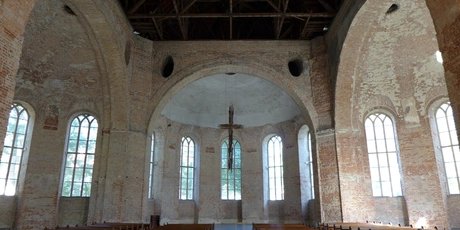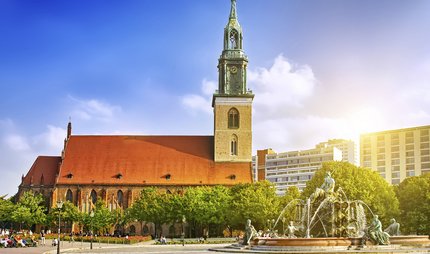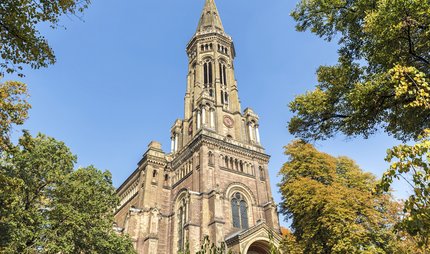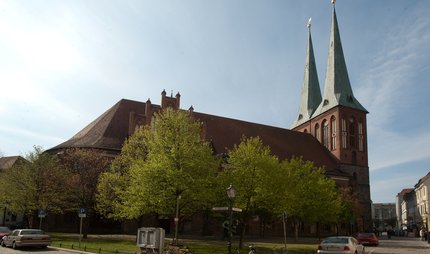
Parochialkirche
The oldest church of the Reformed Protestant community in Berlin
The foundation stone for the Parochialkirche, the first church built for a Protestant congregation in Berlin, was laid in 1695, not far from the historic 13th-century city wall.
Several architects were involved in the construction until it was finally dedicated in 1703: Johann Arnold Nering originally planned the church, but Martin Grünbaum modified the original plans after Nering's death. Andreas Schlüter, Jean de Bodt and Philipp Gerlach also left their marks on the building, a brightly plastered, subtly baroque building with Dutch and Italian influences. It consists of a chancel with four apses in cruciform arrangement, fans of arched windows and a tall narthex, flanked on both sides with pilasters. The tower was completed later in the 18th century and top of the steeple decorated with stone lions.
The carillon
The tower's glockenspiel became famous across Europe because it played every hour and ended with a lion's roar. Unfortunately, both lions and glockenspiel fell silent after bombing in World War II left the interior of the church completely gutted. The walls have been left undecorated to this day to serve as a reminder of the destruction unleashed by the war, together with the iron cross designed by Fritz Kühn from metal scrap from the destroyed church. In summer 2016, the bell tower dome with the golden sun was restored after 72 years and the carillon with 52 bells has been rung since 23 October 2016 from the Parochialkirche's 65 m tower.



